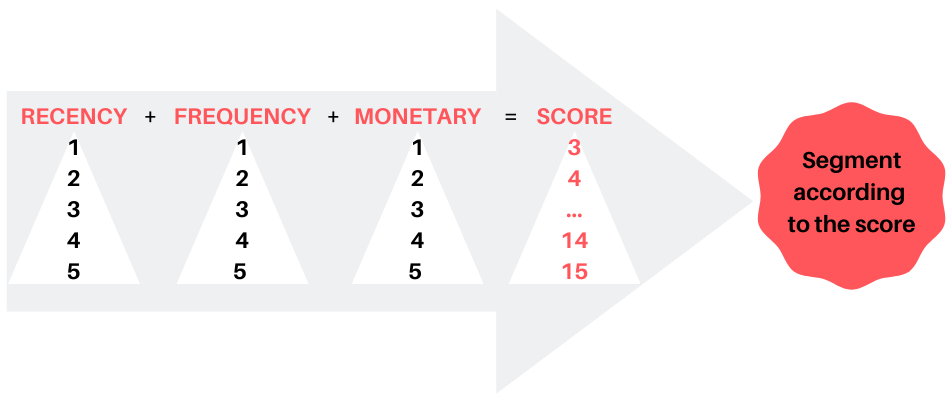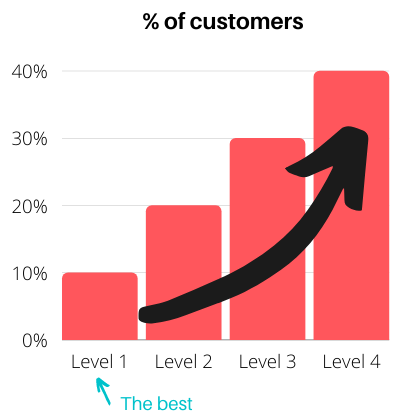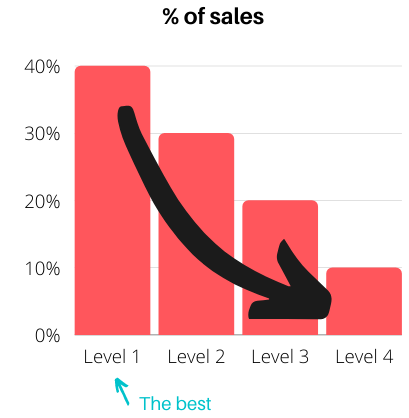@Copyright 2019 Numea
We are talking about customer knowledge, collecting as much information as possible on customers, and knowing everything to have a 360 vision of our customers… Through our experience with different companies of different sizes, we realize that what we consider to be the customer knowledge base is not necessarily applied consistently.
But if you are a small business, if you are starting up or if you begin your analytical journey, what should be your data priorities?
You have no internal segmentation, but you have access to data? First step: a customer segmentation, more specifically a RFM. Basic segmentation for marketers, it allows you to understand your customer assets, their high-level value and to see how they evolve over time.
Each customer is thus classified according to his:
We usually use a point system based on thresholds to be reached to identify the segment. The thresholds are established according to the data, but also according to the desired result.

In order to make the segmentation as relevant as possible, we aim for a customer distribution similar to the following:

You have probably already heard about the 80/20 rule? Customer bases are generally no exception to this rule. Often, we see that only 20-30% of customers represent 60-80% of revenues. Hence the importance of identifying this 20-30% to better meet their expectations.

First, RFM segmentation should be integrated into the company’s performance indicators to be monitored periodically. It allows you to monitor the health of your customer base.
By following up on your best customers more closely, you will be able to react more quickly if that base were to crumble. Even more so in these uncertain times when your best customers are your best chance to get through the current crisis. RFM segmentation can be used to guide marketing tactics to retain higher value customers and to migrate those who have the potential to increase their value.
A RFM segmentation is sometimes limiting when developing tactics. Therefore, we often use it to monitor the customer base, but we can also limit it to RF (Recency and Frequency) to make it more actionable and easier to interpret (2 dimensions instead of three). Based on the fact that the propensity to repurchase increases with the number of transactions, this derivative of RFM segmentation makes it possible to work on the goal of bringing in a customer more often.
In short, several possibilities exist with this simple basic segmentation. Before thinking of developing any other segmentation, a RFM segmentation is the first one that should be established and acquired throughout the organization. Thereafter, whether the next segmentation should be customer or market segmentation depends on your objectives!
@Copyright 2019 Numea